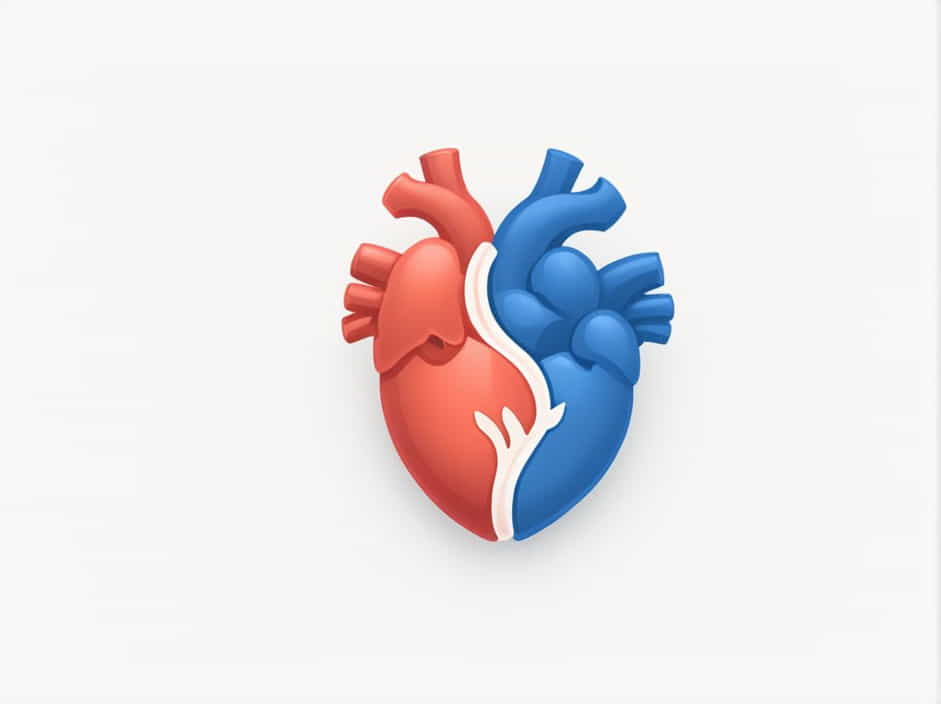The human heart is a powerful organ responsible for circulating blood throughout the body. It is divided into four chambers: the right atrium, right ventricle, left atrium, and left ventricle. Each chamber has a specific function in maintaining proper blood flow.
One of the most crucial roles of the heart is performed by the right ventricle, which pumps deoxygenated blood to the lungs. This process ensures that the blood is oxygenated before being sent to the rest of the body. In this topic, we will explore how the right ventricle functions, its importance, and how it contributes to overall cardiovascular health.
Structure and Function of the Right Ventricle
Location and Anatomy
The right ventricle is located in the lower right portion of the heart. It is one of the two lower chambers, with the left ventricle on the opposite side. The right ventricle has thinner walls than the left ventricle, as it only needs to pump blood a short distance to the lungs.
How the Right Ventricle Works
- Receiving Deoxygenated Blood – The right atrium collects deoxygenated blood from the body and sends it to the right ventricle.
- Pumping Blood to the Lungs – The right ventricle contracts and pushes blood into the pulmonary artery, which carries it to the lungs.
- Oxygenation in the Lungs – In the lungs, the blood releases carbon dioxide and absorbs oxygen.
- Returning to the Heart – The now oxygen-rich blood is sent back to the left side of the heart to be pumped to the rest of the body.
This cycle is essential for keeping the body’s cells supplied with oxygen, which is necessary for survival.
The Right Ventricle and the Pulmonary Circulation
What Is Pulmonary Circulation?
Pulmonary circulation is the part of the cardiovascular system responsible for moving blood between the heart and the lungs. It is different from systemic circulation, which delivers oxygen-rich blood to the body.
How the Right Ventricle Powers Pulmonary Circulation
- The right ventricle pumps blood into the pulmonary artery, which carries it to the lungs.
- Blood flows through the pulmonary capillaries, where gas exchange occurs.
- Oxygenated blood returns to the heart through the pulmonary veins.
This circulation system allows the body to remove waste gases like carbon dioxide and replenish oxygen levels in the blood.
Why the Right Ventricle Is Important for Heart Health
The right ventricle plays a critical role in maintaining healthy circulation and respiratory function. If this chamber does not function properly, oxygen levels in the blood can drop, leading to serious health issues.
Common Problems Affecting the Right Ventricle
Several conditions can weaken or damage the right ventricle, including:
1. Pulmonary Hypertension
- High blood pressure in the pulmonary arteries makes it harder for the right ventricle to pump blood.
- Over time, this can lead to right heart failure.
2. Right Ventricular Failure
- When the right ventricle weakens, it cannot pump blood efficiently to the lungs.
- This can cause fluid buildup in the body, especially in the legs, feet, and abdomen.
3. Congenital Heart Defects
- Some babies are born with abnormal right ventricles, affecting blood flow to the lungs.
- Conditions like tetralogy of Fallot require medical treatment or surgery.
4. Pulmonary Embolism
- A blood clot blocking the pulmonary artery can put strain on the right ventricle.
- This condition can be life-threatening if not treated promptly.
How to Keep the Right Ventricle Healthy
Taking care of the heart, including the right ventricle, is essential for overall health and longevity. Here are some important steps to keep this part of the heart strong:
1. Maintain a Healthy Diet
- Eat foods that support heart health, such as leafy greens, whole grains, lean proteins, and healthy fats.
- Avoid processed foods, excessive salt, and saturated fats, which can increase blood pressure.
2. Exercise Regularly
- Aerobic exercises like walking, jogging, swimming, and cycling help strengthen the heart.
- Strength training and flexibility exercises also support cardiovascular health.
3. Monitor Blood Pressure
- High blood pressure can strain the right ventricle.
- Regular check-ups and blood pressure control can prevent complications.
4. Avoid Smoking and Excess Alcohol
- Smoking damages blood vessels and increases the risk of pulmonary hypertension.
- Excessive alcohol consumption weakens the heart muscles over time.
5. Manage Stress
- Chronic stress releases hormones that can negatively impact heart function.
- Practices like meditation, yoga, and deep breathing can help reduce stress levels.
6. Stay Hydrated
- Drinking enough water helps maintain healthy blood flow and prevents dehydration-related heart strain.
Right Ventricle vs. Left Ventricle: Key Differences
| Feature | Right Ventricle | Left Ventricle |
|---|---|---|
| Function | Pumps deoxygenated blood to the lungs | Pumps oxygenated blood to the body |
| Blood Vessel | Pulmonary artery | Aorta |
| Wall Thickness | Thinner | Thicker |
| Pressure | Lower pressure | Higher pressure |
| Circulation Type | Pulmonary circulation | Systemic circulation |
While both ventricles are essential, they have different functions. The right ventricle handles low-pressure pulmonary circulation, whereas the left ventricle pumps blood at high pressure to the entire body.
The right ventricle is responsible for pumping deoxygenated blood to the lungs, where it receives oxygen before being distributed to the body. It plays a crucial role in pulmonary circulation and overall heart function.
Keeping the right ventricle healthy is essential for preventing heart disease, pulmonary hypertension, and other complications. By maintaining a balanced diet, exercising, managing stress, and avoiding harmful habits, you can protect your heart and ensure it functions efficiently for years to come.
